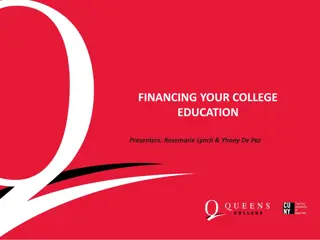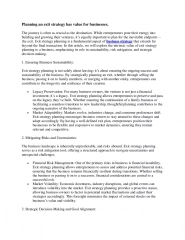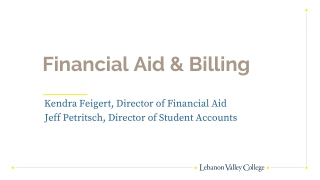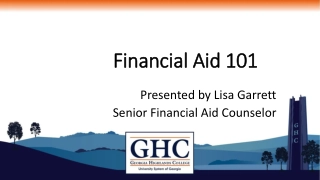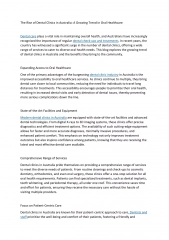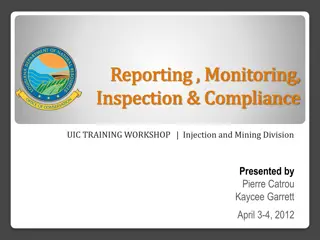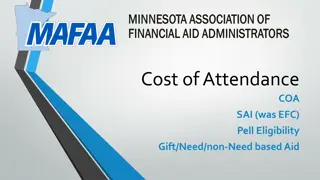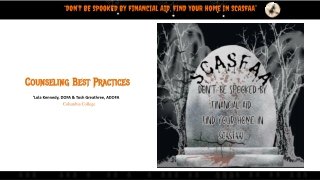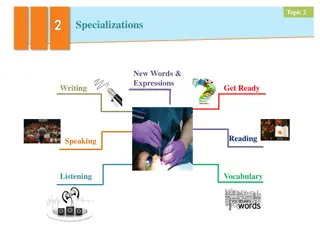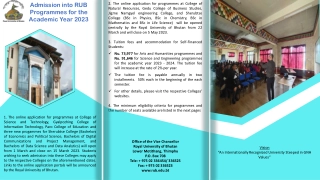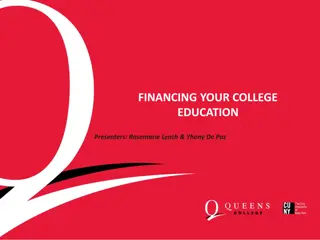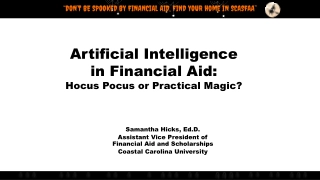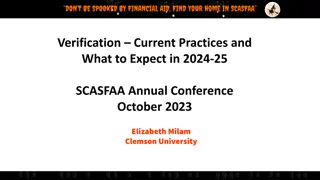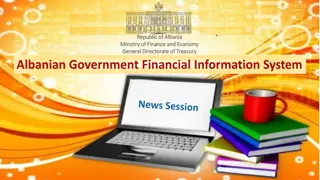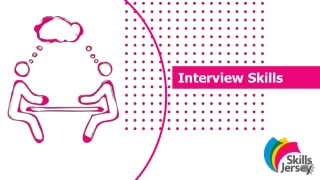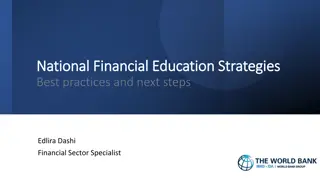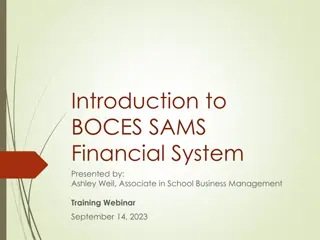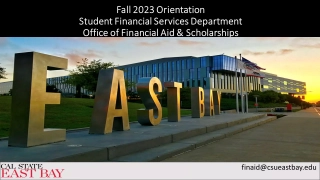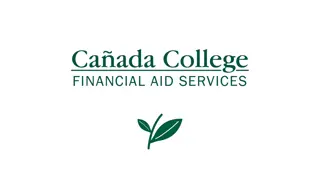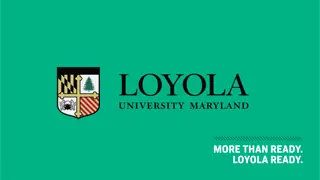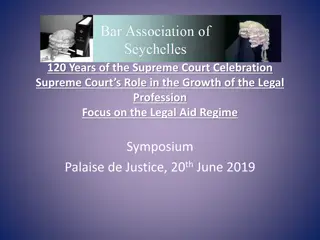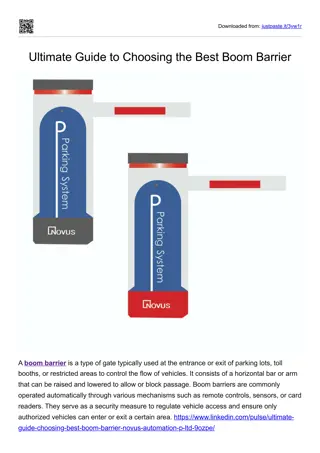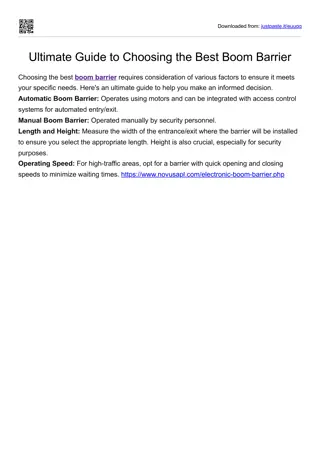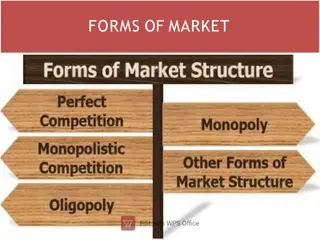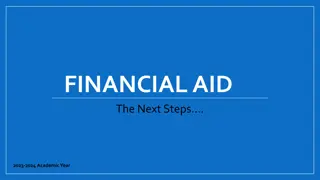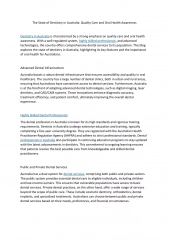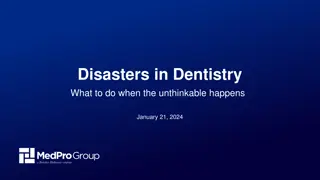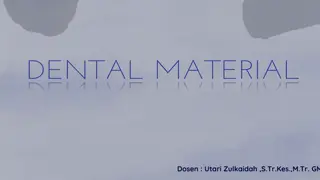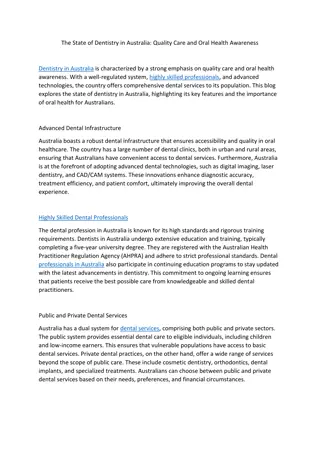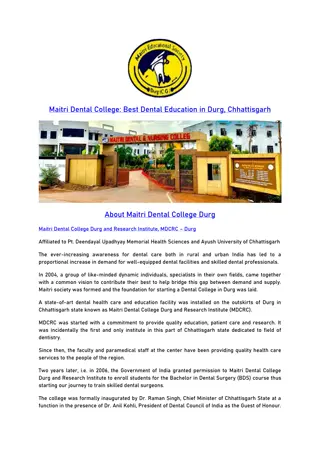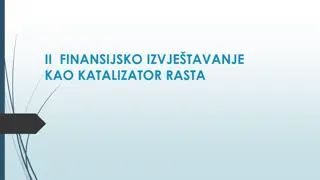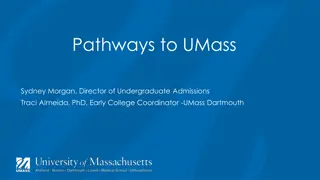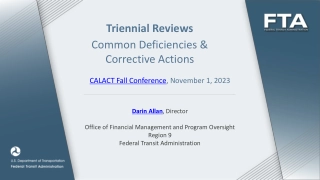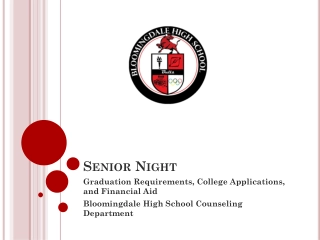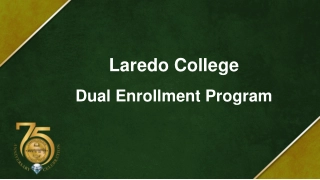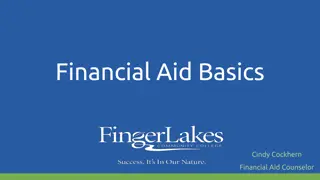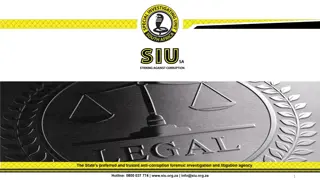Essential Information for UIC College of Dentistry Financial Aid Exit Interview
Obtain crucial details regarding the UIC College of Dentistry financial aid exit interview, including completing exit counseling for federal direct student loans, working closely with loan servicers, choosing an effective repayment strategy, understanding current issues like the CARES Act and Student Debt Relief Plan, and accessing important reminders for managing student loans competently. Stay informed and proactive to navigate your loan repayment successfully.
Essential Information for UIC College of Dentistry Financial Aid Exit Interview
PowerPoint presentation about 'Essential Information for UIC College of Dentistry Financial Aid Exit Interview'. This presentation describes the topic on Obtain crucial details regarding the UIC College of Dentistry financial aid exit interview, including completing exit counseling for federal direct student loans, working closely with loan servicers, choosing an effective repayment strategy, understanding current issues like the CARES Act and Student Debt Relief Plan, and accessing important reminders for managing student loans competently. Stay informed and proactive to navigate your loan repayment successfully.. Download this presentation absolutely free.
Presentation Transcript
UIC Financial Aid Exit Interview College of Dentistry Class of 2023
Office of Student Financial Aid Federal Direct Student loan(s) recipients must complete exit counseling: https://studentaid.gov/exit-counseling Your Loan Summary is based on information from the National Student Loan Database System (NSLDS) www.Studentaid.gov does not include private or institutional loan information. HPSL and LDS Loan(s) recipients will receive notification from Heartland ECSI https://heartland.ecsi.net by email when exit counseling is ready to be completed.
Important Reminders Work closely with loan servicers Consider all repayment options Constantly evaluate your repayment objectives and repayment plan, and change if needed Control what you can control in repayment by meeting all deadlines and keeping your contact information current. Documentation is extremely important Principal loan balance will not come down until you pay more than outstanding interest due Your loans and your repayment strategy are your own
Steps to choosing an effective repayment strategy Know what you borrowed, who services your loans and when they come due Identify and constantly review your repayment objectives Choose a repayment plan to help meet your repayment objectives
Current Issues CARES Act Most federal student loans are currently exempt from interest charges and required payments. Currently it is set to expire 60 days after Student Debt Relief Plan implemented or litigation involving plan is resolved or 60 days after June 30, 2023, if no action taken by the date. For more information https://studentaid.gov/announcements- events/covid-19/income-driven-repayment The U.S. Department of Education will notify borrowers directly before payment resume If you are able, use the interest-free period as an opportunity to pay as much as you can now before interest starts accruing again, or put the money you would be paying toward other debt.
Student Debt Relief Plan* Extension of the CARES Act Targeted debt relief to low and middle- income families Program currently blocked as of February 2023 Make loan repayment more manageable New income plan with lower payments Cover unpaid interest * See StudentAid.gov/debt-relief-announcement for details
Typical Grace Periods Direct Unsubsidized and Graduate PLUS Loans have 6- month window period before repayment starts Called a grace period on direct unsub loans Called a 6-month post-enrollment deferment on direct PLUS Perkins loans have 9-month grace period HPSL and LDS have 12-month grace period Check terms on institutional and private loans If you are planning on using a deferment, you must wait until after your grace period is exhausted.
Loan Servicers Federal Loans Direct unsubsidized and Graduate PLUS Visit www.studentaid.gov to view your servicer and details on your federal student loans. Government is lender, repayment handled by third-party servicer Your federally owned loans should all be serviced by one loan servicer Eligible for repayment with income-driven plans and eligible for PSLF See credit report or financial aid office for loans not listed Important to keep contact information current
Loan Servicers Responsibilities Campus-based Loans* Perkins, Health Professions Student Loans (HPSL),and Loans for Disadvantaged Students (LDS) School is lender, different loan servicer than federal direct loans See disclosure statement from loan office for terms and conditions Private Loans* Private lenders and credit-based loans, not listed at StudentAid.gov See disclosure statement from lender for terms and conditions *Not eligible for repayment with income-driven plan and not eligible for PSLF
Interest rates Fixed rates on direct unsubsidized and direct PLUS (Grad PLUS)* Borrowers have different rates each year on new loans** Direct PLUS always 1% higher than direct unsubsidized 5% fixed on Perkins, HPSL and LDS Rates vary on private loans See disclosure statement for interest rate * 0% rate during period covered by the CARES Act ** Rates change on new loans disbursed on or after July 1st each year, then fixed for life of loan
Changes to Interest Capitalization Capitalization is when any accrued and unpaid interest is added back to principal of loan, increases balance Effective July 1, 2023, interest will no longer capitalize when Enter repayment Change income-driven repayment plans You come out of forbearance (if forbearance used)
Deferment A deferment is period of time when a borrower is exempt from having to immediately begin repaying a loan. The criteria for deferment is set by the lender. Typical deferment conditions are continuing education, economic hardship, inability to find full-time employment, and active military duty. If you enroll in residency program more than half-time, you will continue to qualify for an in-school deferment. Deferments are regulated by the lender. Please note that you must continue to repay your loans until you have been notified that your deferment request has been granted. You might still be responsible for paying the interest that accrues during deferment period.
Forbearance Forbearance occurs when your lender agrees to either temporarily reduce or postpone your student loan payments. If you are granted a forbearance, interest will continue to accrue regardless of the type of loan you have. Always see if you are eligible for a deferment first.
Default Failure to repay a loan according to the terms of the promissory note is called default. If you cannot make your payment, it is your responsibility to immediately contact your lender(s) and request a deferment or forbearance You must continue to pay until loan is confirmed to be in deferment/forbearance with your lender.
Default Repercussions If debtor enters default, the entire balance of the loan may become due immediately Loan defaults will be reported to credit bureau's, which will result in a negative credit report No longer receive deferment or forbearance Wages may be garnished Debtor s account may be forwarded to collection agency Debtor may lose their professional license
Options at repayment Loan servicers usually notify borrowers 30 to 90 days prior to loans coming due Be sure all contact information is up to date, especially if you are doing advanced dental education work Options at repayment Postpone payments, if needed* Start active repayment *See www.studentaid.gov and work with your loan servicer for postponement options.
Repayment reminders There is no penalty for aggressive repayment. You can usually switch repayment plans. Work with your loan servicer if you need to change repayment plans or want to make additional payments. Your one payment to servicer is applied proportionately against all loans they service, based on amount borrowed and rate. Payments are applied to all outstanding interest first before being applied to principal.
Repayment Pick a repayment plan where minimum required payment is comfortable and affordable Overpay if pursing aggressive strategy Make minimum payment only if there are cash flow challenges or on track for PSLF
Repayment Options Multiple repayment plans on federal loans Time-driven Loan servicer calculates payments based on amount borrowed spread over a designated period of time Standard 10 and 25- year terms Payment calculation has nothing to do with income, marital and tax filing status or family size Income-driven Designed for borrowers who have a gap between federal debt and income who cannot afford repayment under standard 10-year plan Monthly payments change annually based on income and family size
Standard Repayment 120 level payments- 10 years Payments are fixed amounts Calculations not dependent on income Automatically enrolled in this plan, if you don t choose a plan Results in the highest monthly payment but the lowest cost over the life of the loan Not a good option for those seeking Public Service Loan Forgiveness (PSLF)
Graduated Repayment 120 payments (up to 10 years) This plan is for borrowers who expect their incomes to rise over time Payments start off low and increase every two years You will pay more over time than under the standard repayment plan Generally, not a qualifying repayment plan for PSLF
Extended Repayment Up to 25 years This plan is available to borrowers with higher debt, more than $30,000 in federal loans. Payments may be fixed or graduated You may pay more interest over time, but your monthly payments will be smaller Not a qualifying repayment plan for PSLF
Income Driven Repayment (IDR) Designed for highly indebted borrowers who cannot afford repayment under other plans, most notably Standard 10 year The bigger the gap between debt and income, more likely these plans are needed Monthly payments change annually, as you must recertify your income and family size each year. Payments for Pay As You Earn (PAYE) and Revised Pay As You Earn (REPAYE) based on federal formula calculated at 10% discretionary income Spousal income counted under all income plans when filing jointly
Pay As You Earn (PAYE) Adjusted each year, based on changes to your annual income and family size. Spousal income excluded if you file taxes separately. 10% of your monthly discretionary income divided by 12 Cap on monthly repayments. Never more than what you d pay on the 10-year Standard Repayment Plan Repayment term: 20 years Balance forgiven considered taxable income
Revised Pay as Your Earn (REPAYE) Adjusted each year, based on changes to your annual income and family size 10% of your monthly discretionary income Spouse income will be considered whether taxes are filed jointly or separately Repayment term: 20 years undergraduate loans 25 years graduate or professional loans. No cap on monthly repayments Balance forgiven considered taxable income
Income Based Repayment (IBR) Adjusted each year, based on changes to your annual income and family size 20 years if you re a new borrower after July 1, 2014. You d pay 10% of your discretionary income. 25 years if you re a borrower before July 1, 2014. You d pay 15% of your discretionary income. Spousal Income won t count if you file taxes separately. Cap on monthly repayments. Never more than what you d pay on the 10-year Standard Repayment Plan *Discretionary income is the amount of income remaining after deduction of taxes, other mandatory charges, and expenditures on necessary items. It s essentially the income you have left over after paying all necessary and required living expenses.
Public Service Loan Forgiveness (PSLF) Encourage borrower to enter and remain in nonprofit sector for at least 10 years with promise to forgive their debt at that time PSLF not degree specific; any borrowers (including dental and dental hygiene graduates) meets eligibility requirements can qualify Three things must happen at the same time in order to qualify for PSLF. Borrowers must: Make 120 timely qualifying payments with an eligible repayment plan. On eligible loans (only direct loans qualify) While working full time (at least 30 hours) for an eligible non-profit employer.
Federal Consolidation Consolidation is the process of combining two or more loans into one new federal loan with a single set of monthly payments. The fixed rate is based on a weighted average of all of the loans that you choose to consolidate. You can consolidate during your grace period or during periods of deferment or forbearance. You can also consolidate once you ve entered repayment. Many recent graduates do not need to consolidate since most have one loan servicer for all their direct loans and rates are already fixed Information and online application at https://studentaid.gov/app/launchConsolidation.action
Takeaways to remember You can change repayment strategies and constantly revisit your repayment objectives, if needed Consider other more aggressive plans first, there are no penalty Keep up to date on changes that may impact you Work with loan servicer and apply online at www.Studentaid.gov for the best payment plan If you don t understand something, call your loan servicer for assistance Open all mail correspondence and read pertaining your student loans
Additional Resources AAMC/ADEA Dental Loan Organizer and Calculator (AAMC/ADEA DLOC) www.ADEA.org/DLOC https://studentaid.gov/loan-simulator/ Repayment Estimator with your actual loans. https://studentaid.gov/ Federal loan history and resource site. https://www.irs.gov/publications/p970 Information on student loan interest deduction
CONGRATULATIONS! Best Wishes to the Class of 2023!
SFAS Contact Information Office of Student Financial Aid and Scholarships Room 1800, Student Services Building 1200 West Harrison Street Chicago, Illinois 60607-7163 Phone: (312) 996-3126 E-mail: DENTFinaid@uic.edu Web Site: https://financialaid.uic.edu/


